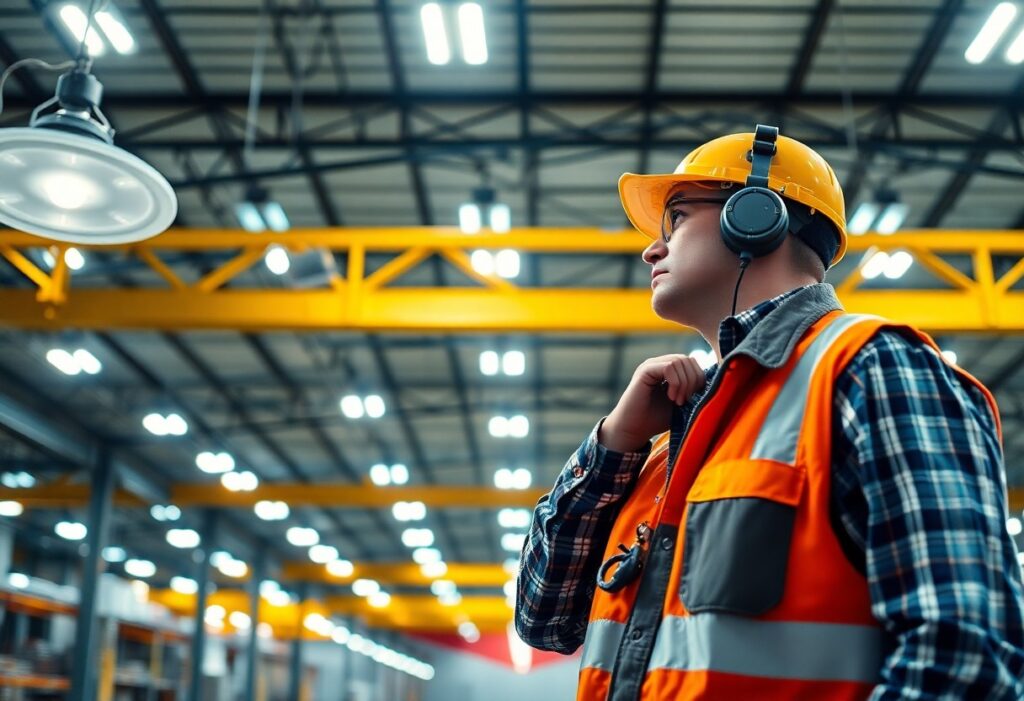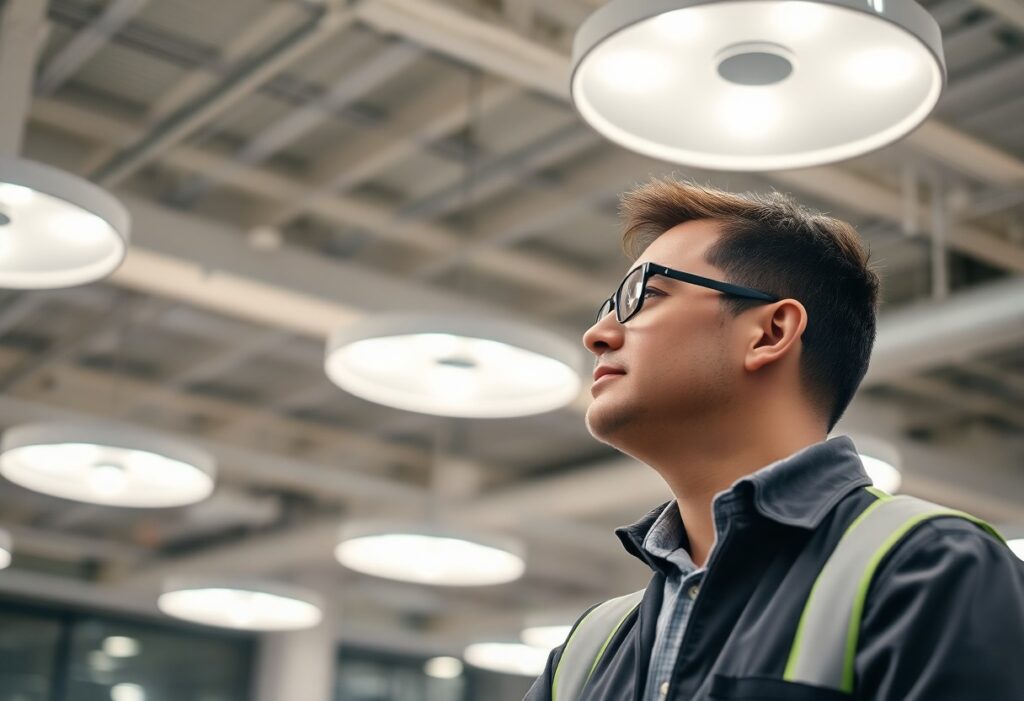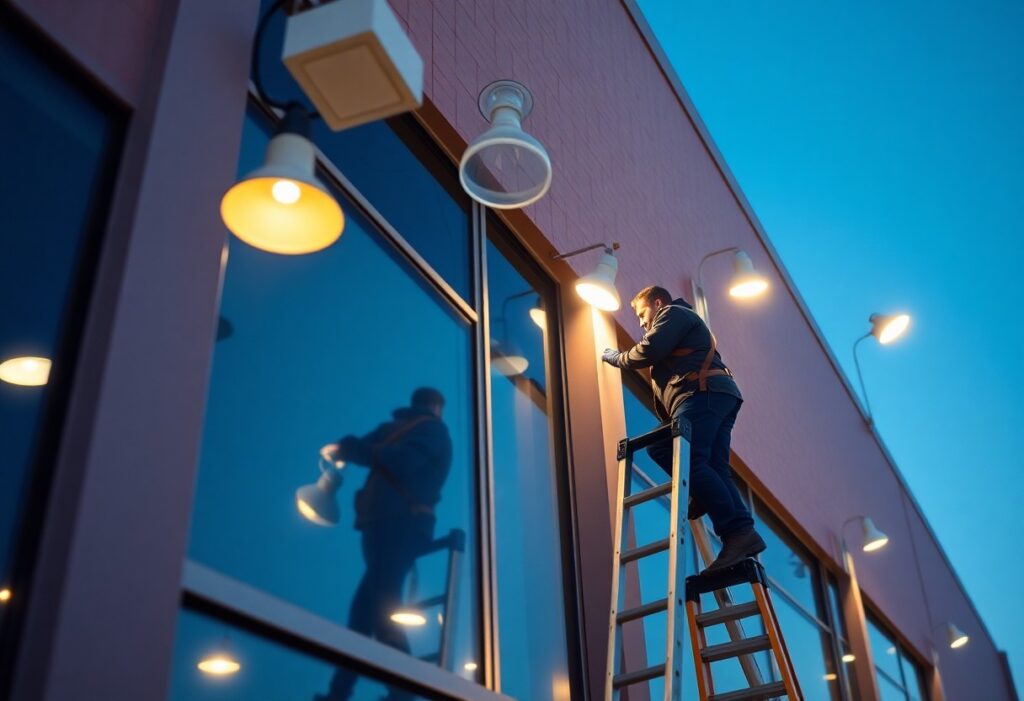There’s no denying the impact of lighting on both your energy bills and the overall appearance of your space. By upgrading to LED lighting, you can significantly reduce your electricity costs while enhancing the aesthetic appeal of your home or business. Not only do LED bulbs consume less energy, but they also offer a range of design options that can transform any room. In this post, you’ll discover how making the switch can benefit both your wallet and your environment, making it a win-win choice for any setting.
Key Takeaways:
- LED lighting significantly reduces energy consumption compared to traditional lighting options, leading to lower electricity bills over time.
- Upgrading to LED lights enhances the overall aesthetics of a space, providing brighter, more uniform illumination that can enhance colors and details.
- LED lights have a longer lifespan, reducing the frequency and costs associated with replacements and maintenance, making them a cost-effective choice in the long run.
Understanding LED Lighting
Before plunging into the benefits of LED lighting, it’s important to understand what sets it apart from traditional lighting options. By exploring The Benefits of Upgrading to LED Lights for House …, you can see the potential impact on both your budget and the look of your space.
What is LED Technology?
With LED (Light Emitting Diode) technology, light is produced through a process called electroluminescence. This process involves passing an electric current through a semiconductor material, which emits light. Unlike incandescent bulbs that generate heat as a byproduct, LEDs convert most energy directly into light, making them significantly more energy-efficient.
Comparison with Traditional Lighting
Above is a quick comparison table that highlights some key differences between LED lighting and traditional lighting sources.
| LED Lighting | Strong lifespan (up to 25,000 hours), energy-efficient, low heat output |
| Traditional Lighting | Shorter lifespan (1,000-2,000 hours), higher energy consumption, generates excess heat |
Comparison shopping between LED lighting and traditional options reveals significant differences in performance and long-term costs. For example, while you might pay more upfront for LED fixtures, the savings on your energy bill can be substantial due to their lower wattage and longer lifespan. Additionally, they require less frequent replacements, ultimately saving you time and money.
The Science Behind Energy Efficiency
Comparison of energy efficiency in LED lights shows that they consume significantly less power than incandescent or fluorescent bulbs. This efficiency stems from their design, as they use at least 75% less energy than traditional lighting solutions.
For instance, when you switch to LED lighting, you can dramatically reduce your electricity usage. This reduction not only benefits your wallet but also contributes positively to the environment by decreasing your carbon footprint, making it a smart choice for eco-conscious consumers.
Financial Benefits of LED Upgrades
It’s no secret that upgrading to LED lighting can lead to significant financial benefits for you. From reducing energy costs to minimizing maintenance expenditures, the switch to LED technology is not just an aesthetic improvement, but a smart financial decision as well.
Reduction in Energy Costs
Before you make the leap, consider that LED lights consume up to 80% less energy compared to traditional incandescent bulbs. This reduction in energy consumption directly translates into lower electricity bills, allowing you to save money each month while also contributing positively to the environment.
Longevity and Maintenance Savings
Maintenance costs are another area where you can see significant benefits. LED lights have a lifespan of 15,000 to 50,000 hours, far surpassing that of conventional bulbs. This longevity means you’ll spend less on replacements and labor, freeing up your time and budget for other projects.
Understanding the differences in longevity means recognizing that with fewer replacements needed, your long-term costs decrease. This durability not only cuts down on the frequency of maintenance but also lessens the environmental impact of waste generated from burnt-out bulbs. Your investment in LED technology pays off in both time and hassle saved.
Initial Investment vs. Long-Term Savings
Savings might seem minimal upfront, but the long-term financial benefits of LED upgrades quickly become apparent. Although the initial investment may be higher than traditional fixtures, the combined savings on energy and maintenance can lead to remarkable returns over time. This smart financial strategy can ultimately offset the initial costs.
Plus, your initial investment pays dividends as time goes on. The significant reduction in your energy bills and maintenance expenses makes a compelling argument for choosing LEDs. Over their lifespan, the cumulative savings often far exceed the initial expenditure, allowing you to allocate resources to other areas of your business or home.
Potential Tax Incentives and Rebates
To further enhance your savings, don’t overlook potential tax incentives and rebates available for LED upgrades. Many local and federal initiatives provide financial benefits for energy-efficient improvements, effectively reducing your upfront costs even more.
For instance, various utility companies offer rebates for switching to LED lighting, which can significantly lower the overall investment. Coupled with tax credits for energy-efficient upgrades, these incentives position your LED transition as not only an aesthetic enhancement but a smart fiscal strategy. Make sure you research available programs in your area to maximize your savings.
Aesthetic Improvements
Unlike traditional lighting options, LED upgrades can dramatically enhance the visual appeal of your space. By providing brighter, more vibrant light, LEDs can highlight architectural features and artwork, making your environment more inviting and engaging.
Enhanced Color Rendering
Between different lighting sources, LEDs excel in color rendering, allowing you to showcase the true hues of your decor. This not only enhances the overall aesthetic of your space but also contributes to a more accurate representation of colors in your home or business.
Versatility in Lighting Designs
On the topic of versatility, LED lighting offers endless possibilities in design. They come in various shapes, sizes, and colors, making it easy for you to create unique lighting solutions that fit your style and changing needs.
Enhanced flexibility allows for both functional and decorative applications. You can incorporate recessed lighting for a sleek look or opt for decorative fixtures that serve as focal points. This adaptability means you can tailor your lighting to suit any room or occasion, ensuring your space always looks its best.
Impact on Mood and Environment
Impacting your mood, LED lighting can create specific atmospheres in your home or workplace. Utilizing different color temperatures, LEDs allow you to enhance focus, relaxation, or vibrancy depending on the activity or time of day.
For instance, using warmer tones in living areas promotes a cozy, inviting atmosphere, while cooler shades can invigorate workspace environments. The ability to control the ambiance through lighting not only improves aesthetics but also influences how you feel in your surroundings, making it an vital aspect of interior design.
Consistency in Lighting Quality
Environmentally, LED lights deliver consistent illumination without flickering or color shifting, ensuring that your space maintains a uniform look. This stability promotes a polished, professional appearance throughout your home or business.
Consequently, this consistency can prevent the eye strain and fatigue associated with fluctuating light sources, allowing you to enjoy your environment more fully. The quality of LED lighting not only enhances aesthetics but also contributes to a more comfortable and visually pleasing experience for you and your guests.
Environmental Impact
Now, as you consider the benefits of LED lighting upgrades, it’s vital to highlight their positive impact on the environment. Transitioning to LED technology not only enhances your space but also plays a significant role in reducing the ecological footprint associated with traditional lighting systems.
Reduction of Carbon Footprint
Carbon emissions from energy consumption are reduced significantly when you switch to LED lighting. LEDs use substantially less electricity than incandescent or fluorescent bulbs, which means your energy consumption and, in turn, your carbon footprint, are lowered. This transition not only benefits your wallet but also contributes to a healthier planet.
Decrease in Hazardous Waste
Beside reducing energy costs, LED lighting minimizes the production of hazardous waste. Traditional bulbs, particularly fluorescent ones, contain toxic materials such as mercury. By switching to LEDs, you contribute to less dangerous waste being generated, making your lighting choices more environmentally friendly.
It is important to note that by choosing LED lights, you are actively participating in a movement toward safer disposal methods and reduced landfill impact. The long lifespan of LEDs means fewer replacements over time, leading to less waste overall. This is a significant advantage when you consider the environmental issues associated with disposing of conventional lighting options.
Contribution to Sustainable Practices
An upgrade to LED lighting is a step toward sustainable living. By implementing energy-efficient lighting, you align your habits with eco-friendly practices that promote sustainability. The reduced demand for electricity helps conserve energy resources, ultimately supporting the environment.
At the same time, LEDs offer extended operational life, which means fewer resources consumed in manufacturing and transporting new bulbs. This longevity not only aids in reducing overall waste but also emphasizes a commitment to responsible practices in energy use and consumption. You can enjoy a stylish and cost-effective lighting solution that benefits both your space and the planet.
Implementing LED Lighting Upgrades
For those looking to enhance their space while cutting costs, implementing LED lighting upgrades is a practical solution. By opting for LED Lighting – Immediate savings, improved aesthetics …, you can achieve a beautiful and energy-efficient environment.
Assessing Your Current Lighting System
Along your journey to modernization, start by evaluating your current lighting system. Take note of the types of bulbs you have, their energy consumption, and any performance issues. This will help you identify what needs improvement and what can be replaced with LED options.
Planning for Upgrades
With a solid assessment in hand, the next step is to plan for your upgrades. This includes setting a budget, determining which areas need new lighting, and deciding on the best time to implement changes.
Another important aspect of planning is to consider the overall design of your space. Think about how different lighting options can highlight architectural features or create desired ambiance. Make sure your upgrade aligns with both functionality and aesthetics to maximize the benefits.
Selecting the Right LED Options
Any upgrade would be incomplete without selecting the right LED options for your needs. Focus on factors such as brightness, color temperature, and energy efficiency to ensure you choose the best products for your environment.
For instance, consider how different color temperatures can affect the mood of a room. Warm white LEDs may offer a cozy vibe, while cool white options can create an energizing atmosphere. Matching the LED choice to each room’s purpose can enhance both function and style.
Engaging Professionals for Installation
Installation can be intricate, which is why bringing in professionals for your LED upgrades is advisable. They can ensure that your new lighting meets local codes and is properly integrated into your existing systems.
A qualified team can also provide valuable insights on the latest technologies and best practices, saving you from potential pitfalls. Investing in professional installation ensures that your upgrades are executed flawlessly, allowing you to enjoy the benefits of LED lighting stress-free.

Common Myths and Misconceptions
Once again, LED lighting is shrouded in myths and misconceptions that may deter you from making the upgrade. Understanding the reality behind these misunderstandings can empower you to make informed decisions for both your finances and your home’s aesthetics.
LED Lighting is Too Expensive
About the cost, many believe that LED lights are too expensive for initial purchase. While the upfront investment is often higher than traditional bulbs, the savings on energy bills and longer lifespan quickly offset the initial costs. Over time, your overall expenditure decreases significantly.
LEDs are Not Bright Enough
To address brightness concerns, many people think that LEDs lack the illumination power of traditional lighting. This is a misconception; LED technology has advanced significantly, and various options now provide excellent brightness levels suitable for all spaces.
Myths surrounding LED brightness stem from earlier models that may have underperformed. Current LED technology offers different color temperatures and lumens, making it easy for you to find the right intensity for your specific needs, whether for cozy living spaces or bright work areas.
LEDs Cause Eye Strain
One common worry is that LED lighting causes eye strain. This concern often arises from the blue light emitted by some LED lights, leading people to believe they are harmful. However, the levels you encounter in typical home use are not significant enough to impact your eye comfort.
At the same time, the flicker rate of LEDs is generally stable, and many modern designs include features to minimize harsh brightness. Choosing high-quality LED products with adjustable settings can further enhance your visual comfort, allowing you to enjoy the benefits without discomfort.
LED Lifespan is Overstated
The perception that LED lifespans are exaggerated often leads to skepticism. While manufacturers may claim LED bulbs last longer than traditional options, these figures are based on average usage, and you can experience their longevity under the right conditions.
Also, factors like quality, usage, and environmental conditions play roles in lifespan. By properly installing and using LEDs as recommended, you typically enjoy years of reliable performance, making the claim of longevity very much a reality rather than a myth.
To wrap up
Taking this into account, upgrading to LED lighting not only significantly reduces your energy costs but also enhances the aesthetic appeal of your space. By choosing LED lights, you benefit from long-lasting durability and a variety of design options that can transform your home’s atmosphere. Your investment in quality lighting pays off in both savings and style, providing you with an inviting environment. Explore more about How LED Lights can make your home an aesthetic haven! to see the possibilities awaiting you.
FAQ
Q: How do LED lighting upgrades contribute to energy savings?
A: LED lighting upgrades can significantly reduce energy consumption due to their high efficiency. LEDs convert a larger portion of electrical energy into light rather than heat, which means they use about 75-80% less energy compared to traditional incandescent bulbs. This lower energy usage translates into lower electricity bills over time, providing substantial savings for both residential and commercial properties. Additionally, many utility companies offer incentives for switching to energy-efficient lighting solutions, further enhancing savings.
Q: In what ways do LED lights enhance the aesthetic appeal of a space?
A: LED lights are available in a wide variety of colors and styles, allowing for extensive customization of a space’s ambiance. They offer better color rendering, meaning they more accurately illuminate colors, which can make spaces appear brighter and more inviting. Moreover, LED technology enables the use of dimmers, adjustable brightness levels, and decorative fixtures that can highlight architectural features. This versatility allows homeowners and businesses to achieve the desired atmosphere that can impress clients, guests, or family members.
Q: What additional benefits do LED lighting upgrades provide beyond cost savings and aesthetics?
A: Apart from saving money and enhancing aesthetics, LED lighting upgrades also offer improved longevity and reduced maintenance costs. LEDs have a significantly longer lifespan, typically lasting 15,000 to 50,000 hours, which means less frequent replacements are needed. This extended lifespan reduces the hassle and costs associated with buying and installing new bulbs frequently. Furthermore, LEDs are known for their durability and resistance to shock, making them suitable for a variety of environments. With a lower environmental impact and the potential for advanced smart technology integration, LED lights indeed represent a forward-thinking lighting solution.



